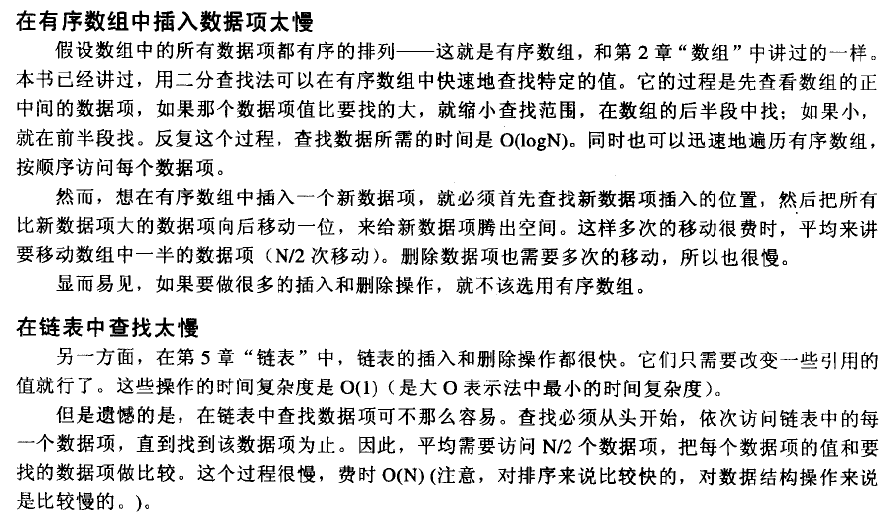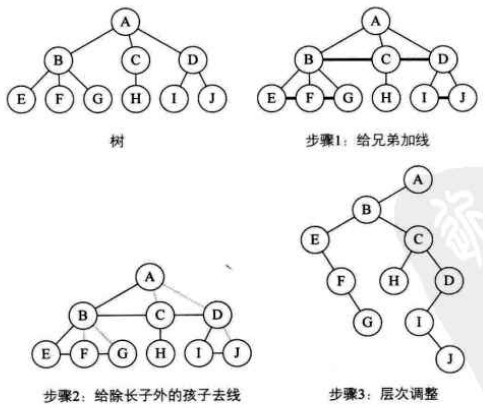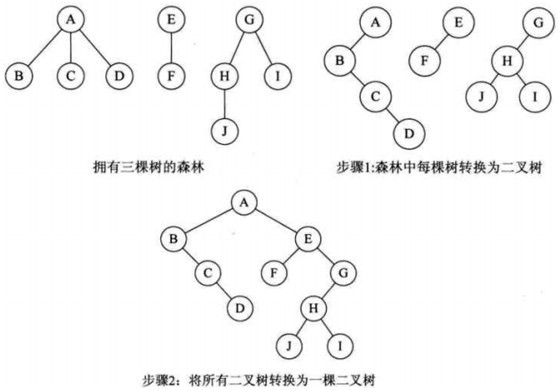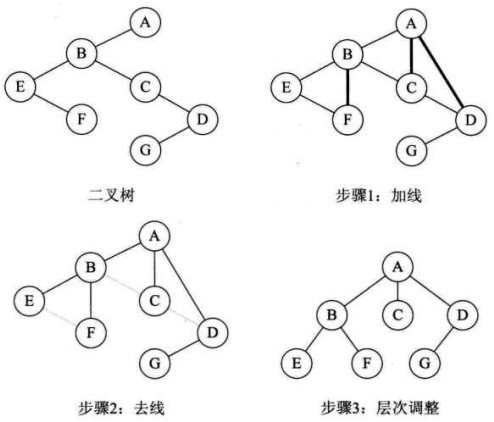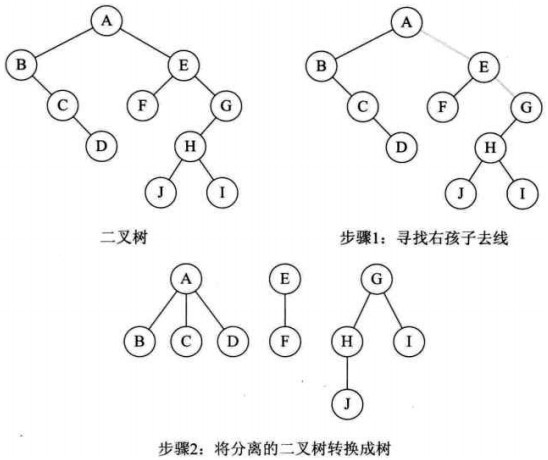1.二叉树的遍历 前序遍历——根 左 右
中序遍历——左 根 右
后序遍历——左 右 根
2.二叉树的实现 1 2 3 4 5 6 7 8 9 10 11 12 13 14 15 16 17 18 19 20 21 22 23 24 25 26 27 28 29 30 31 32 33 34 35 36 37 38 39 40 41 42 43 44 45 46 47 48 49 50 51 52 53 54 55 56 57 58 59 60 61 62 63 64 65 66 67 68 69 70 71 72 73 74 75 76 77 78 79 80 81 82 83 84 85 86 87 88 89 90 91 92 93 94 95 96 97 98 99 100 101 102 103 104 105 106 107 108 109 110 111 112 113 114 115 116 117 118 119 120 121 122 123 124 125 126 127 128 129 130 131 132 133 134 135 136 137 138 139 140 141 142 143 144 145 146 147 148 149 150 151 152 153 154 155 156 157 158 159 160 161 162 163 164 165 166 167 168 169 170 171 172 173 174 175 176 177 178 179 180 181 182 183 184 185 186 187 188 189 190 191 192 193 194 195 196 197 198 199 200 201 202 203 204 205 206 207 208 209 210 211 212 213 214 215 216 217 218 219 220 221 222 223 224 225 226 227 228 229 230 231 232 233 234 235 236 237 238 239 240 241 242 243 244 245 246 247 248 249 250 251 252 253 254 255 256 257 258 259 260 261 262 263 264 265 266 267 268 269 270 271 272 273 274 275 276 277 278 279 280 281 282 283 284 285 286 287 288 289 290 291 292 293 294 295 296 297 298 299 300 301 302 class Stack_BinaryTree{ private int maxSize; //栈的长度 private Node[] stackArray; //创建栈的数组的引用 private int top; //创建栈顶的引用 public Stack_BinaryTree(int s) { //构造函数 this.maxSize = s; stackArray = new Node[maxSize]; //创建对象 top = -1; //栈顶等于-1 } public void push(Node j){ //入栈操作 stackArray[++top] = j; //先把top=-1自加成0,再入栈 } public Node pop(){ return stackArray[top--]; //弹出当前栈顶的元素后,再自减 } public Node peek(){ return stackArray[top]; //返回当前栈顶的元素 } public boolean isEmpty(){ //栈顶为-1,即栈为空 return (top == -1); } public boolean isFull(){ //栈顶为maxSize-1,即栈为满 return (top == maxSize-1); } } class Node{ int iData; double fData; Node leftChild; Node rightChild; public void display(){ System.out.println('{'); System.out.println(iData); System.out.println(','); System.out.println(fData); System.out.println('}'); } } class Tree{ public Node root; public Tree(){ root = null; } public Node find(int key){ //查找关键字的节点 Node current = root; while(current.iData != key){ //不等于就一直循环 if(key<current.iData){ current = current.leftChild; }else{ current = current.rightChild; } if(current == null){ return null; } } return current; } public void insert(int id,double dd){ //插入新的节点 Node newNode = new Node(); newNode.iData = id; newNode.fData = dd; if(root == null){ root = newNode; }else{ Node current = root; Node parent; while(true){ parent = current; if(newNode.iData<current.iData){ //如果插入的节点的数据小于当前节点的数据 current = current.leftChild; if(current == null){ parent.leftChild = newNode; //把父亲节点的左孩子设为新节点 return; } }else{ //如果插入的节点的数据大于当前节点的数据 current = current.rightChild; if(current == null){ parent.rightChild = newNode; //把父亲节点的右孩子设为新节点 return; } } } } } public void displayTree(){ //显示整个二叉树 Stack_BinaryTree globalStack = new Stack_BinaryTree(128); //用来放置每一层的二叉树 globalStack.push(root); //入栈 int nBlanks = 32; boolean isRowEmpty = false; System.out.println("............................................."); while(isRowEmpty==false){ Stack_BinaryTree localStack = new Stack_BinaryTree(128); //用来放置下一层的二叉树 isRowEmpty = true; for(int j=0;j<nBlanks;j++){ System.out.print(' '); } while(globalStack.isEmpty()==false){ //当globalStack不为空,就一直出栈 Node temp = (Node)globalStack.pop(); //temp等于globalStack出栈的节点 if(temp!=null){ System.out.print(temp.iData); //当当前的节点不为空的时候,输出节点的值 localStack.push(temp.leftChild); //入栈globalStack的左孩子到下一层 localStack.push(temp.rightChild); //入栈globalStack的右孩子到下一层 if(temp.leftChild != null || temp.rightChild != null){ isRowEmpty = false; //只要有一个子节点不为空,就把isRowEmpty置为false } } else{ //否则输出--,并把下一层置为空 System.out.print("--"); localStack.push(null); localStack.push(null); } for(int j=0;j<nBlanks*2-2;j++){ System.out.print(' '); } } System.out.println(); nBlanks /= 2; //输出的空格数减半 while(localStack.isEmpty() == false){ globalStack.push(localStack.pop()); //还原本来的层 } } System.out.println("............................................."); } public void preOrder(Node localRoot){ //前序遍历 if(localRoot != null){ System.out.print(localRoot.iData+" "); preOrder(localRoot.leftChild); preOrder(localRoot.rightChild); } } public void inOrder(Node localRoot){ //中序遍历 if(localRoot != null){ inOrder(localRoot.leftChild); System.out.print(localRoot.iData+" "); inOrder(localRoot.rightChild); } } public void postOrder(Node localRoot){ //后序遍历 if(localRoot != null){ postOrder(localRoot.leftChild); postOrder(localRoot.rightChild); System.out.print(localRoot.iData+" "); } } public Node minimum(){ //找到最小的节点 Node current; Node last = null; current = root; while(current != null){ last = current; current = current.leftChild; } return last; } public Node maxmum(){ //找到最大的节点 Node current; Node last = null; current = root; while(current != null){ last = current; current = current.rightChild; } return last; } public boolean delete(int key){ Node current = root; Node parent = root; boolean isLeftChild = true; while(current.iData != key){//查找要删除的节点,并把其置为current,如果没有返回null parent = current; if(key<current.iData){ current = current.leftChild; isLeftChild = true; //当前current节点的parent节点有左孩子节点 }else{ current = current.rightChild; isLeftChild = false; //当前current节点的parent节点没有左孩子节点 } if(current == null){ return false; } } //进入以下的时候,说明current已经匹配到要删除的节点 //如果匹配的current节点没有孩子节点 if(current.leftChild == null && current.rightChild == null){ if(current == root){ //如果这个节点就是根节点 root = null; }else if(isLeftChild){ parent.leftChild = null; //父节点断开左孩子节点 }else{ parent.rightChild = null; //父节点断开右孩子节点 } } //如果current没有右孩子,则要把左子树上移 else if(current.rightChild == null){ if(current == root){ //如果是根节点 root = current.leftChild; }else if(isLeftChild){ //如果current节点是左孩子,则把current的左孩子放到parent的左孩子位置 parent.leftChild = current.leftChild; }else{ //如果current节点是右孩子,则把current的左孩子放到parent的右孩子位置 parent.rightChild = current.leftChild; } } //如果current没有左孩子,则要把右子树上移 else if(current.leftChild == null){ if(current == root){ //如果是根节点 root = current.rightChild; }else if(isLeftChild){ //如果current节点是左孩子,则把current的右孩子放到parent的左孩子位置 parent.leftChild = current.rightChild; }else{ //如果current节点是右孩子,则把current的右孩子放到parent的右孩子位置 parent.rightChild = current.rightChild; } } //如果current有左右孩子 else{ Node successor = getSuccessor(current); if(current == root){ //如果要删除的节点是根节点 root = successor; }else if(isLeftChild){ //如果要删除的节点是左孩子 parent.leftChild = successor; }else{ //如果要删除的节点是右孩子 parent.rightChild = successor; } successor.leftChild = current.leftChild;//把最小的值的节点连接到要删除节点的左子树上 } return true; } private Node getSuccessor(Node delNode){ Node successorParent = delNode; Node successor = delNode; Node current = delNode.rightChild; while(current != null){ //循环,直到返回右子树中最小的值 successorParent = successor; successor = current; current = current.leftChild; } if(successor != delNode.rightChild){ successorParent.leftChild = successor.rightChild; //把最小的值的右孩子放到该最小值的位置 successor.rightChild = delNode.rightChild; //把最小的值连接到要删除的节点的右子树上 } return successor; } } public class BinaryTree { public static void main(String[] args) throws Exception{ // TODO 自动生成的方法存根 int value; Tree theTree = new Tree(); theTree.insert(50, 1.5); theTree.insert(25, 1.4); theTree.insert(75, 1.3); theTree.insert(12, 1.6); theTree.insert(37, 1.7); //theTree.insert(43, 1.2); theTree.insert(60, 1.1); theTree.insert(85, 1.1); theTree.insert(77, 1.1); theTree.displayTree(); System.out.println("查找节点的值:"+theTree.find(77).iData); theTree.preOrder(theTree.root); System.out.println(); theTree.inOrder(theTree.root); System.out.println(); theTree.postOrder(theTree.root); System.out.println(); System.out.println("最小的节点:"+theTree.minimum().iData); System.out.println("最大的节点:"+theTree.maxmum().iData); theTree.delete(75); theTree.displayTree(); } }
3.树、森林和二叉树之间的转换 树转换为二叉树
加线
在所有兄弟结点之间加一条连线。
去线
树中的每个结点,只保留它与第一个孩子结点的连线,删除它与其它孩子结点之间的连线。
层次调整
以树的根节点为轴心,将整棵树顺时针旋转一定角度,使之结构层次分明。(注意第一个孩子是结点的左孩子,兄弟转换过来的孩子是结点的右孩子)
森林转换为二叉树
把每棵树转换为二叉树。
第一棵二叉树不动,从第二棵二叉树开始,依次把后一棵二叉树的根结点作为前一棵二叉树的根结点的右孩子,用线连接起来。
二叉树转换为树 是树转换为二叉树的逆过程。
加线
若某结点X的左孩子结点存在,则将这个左孩子的右孩子结点、右孩子的右孩子结点、右孩子的右孩子的右孩子结点…,都作为结点X的孩子。将结点X与这些右孩子结点用线连接起来。
去线
删除原二叉树中所有结点与其右孩子结点的连线。
层次调整。
二叉树转换为森林 假如一棵二叉树的根节点有右孩子,则这棵二叉树能够转换为森林,否则将转换为一棵树。
从根节点开始,若右孩子存在,则把与右孩子结点的连线删除。再查看分离后的二叉树,若其根节点的右孩子存在,则连线删除…。直到所有这些根节点与右孩子的连线都删除为止。
2. 将每棵分离后的二叉树转换为树。
4.平衡二叉树的平衡因子 若向平衡二叉树中插入一个新结点后破坏了平衡二叉树的平衡性。首先要找出插入新结点后失去平衡的最小子树根结点的指针。然后再调整这个子树中有关结点之间的链接关系,使之成为新的平衡子树。当失去平衡的最小子树被调整为平衡子树后,原有其他所有不平衡子树无需调整,整个二叉排序树就又成为一棵平衡二叉树。
失去平衡的最小子树是指以离插入结点最近,且平衡因子绝对值大于 1 的结点作为根的子树。假设用 A 表示失去平衡的最小子树的根结点,则调整该子树的操作可归纳为下列四种情况。
( 1 ) LL 型平衡旋转法
由于在 A 的左孩子 B 的左子树上插入结点 F ,使 A 的平衡因子由 1 增至 2 而失去平衡。故需进行一次顺时针旋转操作。 即将 A 的左孩子 B 向右上旋转代替 A 作为根结点, A 向右下旋转成为 B 的右子树的根结点。而原来 B 的右子树则变成 A 的左子树。
( 2 ) RR 型平衡旋转法
由于在 A 的右孩子 C 的右子树上插入结点 F ,使 A 的平衡因子由 -1 减至 -2 而失去平衡。故需进行一次逆时针旋转操作。即将 A 的右孩子 C 向左上旋转代替 A 作为根结点, A 向左下旋转成为 C 的左子树的根结点。而原来 C 的左子树则变成 A 的右子树。
( 3 ) LR 型平衡旋转法
由于在 A 的左孩子 B 的右子数上插入结点 F ,使 A 的平衡因子由 1 增至 2 而失去平衡。故需进行两次旋转操作(先逆时针,后顺时针)。即先将 A 结点的左孩子 B 的右子树的根结点 D 向左上旋转提升到 B 结点的位置,然后再把该 D 结点向右上旋转提升到 A 结点的位置。即先使之成为 LL 型,再按 LL 型处理 。
如图中所示,即先将圆圈部分先调整为平衡树,然后将其以根结点接到 A 的左子树上,此时成为 LL 型,再按 LL 型处理成平衡型。
( 4 ) RL 型平衡旋转法
由于在 A 的右孩子 C 的左子树上插入结点 F ,使 A 的平衡因子由 -1 减至 -2 而失去平衡。故需进行两次旋转操作(先顺时针,后逆时针),即先将 A 结点的右孩子 C 的左子树的根结点 D 向右上旋转提升到 C 结点的位置,然后再把该 D 结点向左上旋转提升到 A 结点的位置。即先使之成为 RR 型,再按 RR 型处理。
如图中所示,即先将圆圈部分先调整为平衡树,然后将其以根结点接到 A 的左子树上,此时成为 RR 型,再按 RR 型处理成平衡型。
平衡化靠的是旋转。 参与旋转的是 3 个节点(其中一个可能是外部节点 NULL ),旋转就是把这 3 个节点转个位置。注意的是,左旋的时候 p->right 一定不为空,右旋的时候 p->left 一定不为空,这是显而易见的。
如果从空树开始建立,并时刻保持平衡,那么不平衡只会发生在插入删除操作上,而不平衡的标志就是出现 bf == 2 或者 bf == -2 的节点。
5.树的三种存储结构 (转自http://blog.csdn.net/x1247600186/article/details/24670775)
说到存储结构,我们就会想到常用的两种存储方式:顺序存储和链式存储两种。
先来看看顺序存储,用一段地址连续的存储单元依次存储线性表中数据元素,这对于线性表来说是很自然的,但是对于树这种一对多的结构而言是否适合呢?
树中某个结点的孩子可以有多个,这就意味着,无论用哪种顺序将树中所有的结点存储到数组中,结点的存储位置都无法直接反映逻辑关系,试想一下,数据元素挨个存储,那么谁是谁的双亲,谁是谁的孩子呢?所以简单的顺序存储是不能满足树的实现要求的。
不过可以充分利用顺序存储和链式存储结构的特点,完全可以实现对树的存储结构的表示。
下面介绍三种不同的树的表示法:双亲表示法,、孩子表示法,、孩子兄弟表示法。
1、双亲表示法:
我们假设以一组连续空间存储树的结点,同时在每个结点中,附设一个指示器指向其双亲结点到链表中的位置 。也就是说每个结点除了知道自己之外还需要知道它的双亲在哪里。
它的结构特点是如图所示:
以下是我们的双亲表示法的结构定义代码:
1 2 3 4 5 6 7 8 9 10 11 12 13 14 15 /*树的双亲表示法结点结构定义 */ #define MAXSIZE 100 typedef int ElemType; //树结点的数据类型,暂定为整形 typedef struct PTNode //结点结构 { ElemType data; //结点数据 int parent; //双亲位置 }PTNode; typedef struct { PTNode nodes[MAXSIZE]; //结点数组 int r,n; //根的位置和结点数 }PTree;
2、孩子表示法
换一种不同的考虑方法。由于每个结点可能有多棵子树,可以考虑使用多重链表,即每个结点有多个指针域,其中每个指针指向一棵子树的根结点,我们把这种方法叫做多重链表表示法。不过树的每个结点的度,也就是它的孩子个数是不同的。所以可以设计两种方案来解决。
方案一:
一种是指针域的个数就等于树的度(树的度是树的各个结点度的最大值)
其结构如图所示:
不过这种结构由于每个结点的孩子数目不同,当差异较大时,很多结点的指针域就都为空,显然是浪费空间的,不过若树的各结点度相差很小时,那就意味着开辟的空间都被利用了,这时这种缺点反而变成了优点。
方案二:
第二种方案是每个结点指针域的个数等于该结点的度,我们专门取一个位置来存储结点指针域的个数。
其结构如图所示:
这种方法克服了浪费空间的缺点,对空间的利用率是很高了,但是由于各个结点的链表是不相同的结构,加上要维护结点的度的数值,在运算上就会带来时间上的损耗。
能否有更好的方法呢,既可以减少空指针的浪费,又能是结点结构相同。
说到这大家肯定就知道是有的麦,那就是孩子表示法。
具体办法是,把每个结点的孩子排列起来,以单链表做存储结构,则n个结点有n个孩子链表,如果是叶子结点则此单链表为空。然后n个头指针有组成一个线性表,采用顺序存储结构,存放进入一个一维数组中 。
为此,设计两种结点结构,
一个是孩子链表的孩子结点,如下所示:
其中child是数据域,用来存储某个结点在表头数组中的下标。next是指针域,用来存储指向某结点的下一个孩子结点的指针。
另一个是表头结点,如下所示:
其中data是数据域,存储某结点的数据信息。firstchild是头指针域,存储该结点的孩子链表的头指针。
以下是孩子表示法的结构定义代码:
1 2 3 4 5 6 7 8 9 10 11 12 13 14 15 16 17 18 19 20 /*树的孩子表示法结点结构定义 */ #define MAXSIZE 100 typedef int ElemType; //树结点的数据类型,暂定为整形 typedef struct CTNode //孩子结点 { int child; struct CTNode *next; }*ChildPtr; typedef struct //表头结构 { ElemType data; ChildPtr firstchild; }CTBox; typedef struct //树结构 { CTBox nodes[MAXSIZE]; //结点数组 int r,n; //根结点的位置和结点数 }CTree;
3、孩子兄弟表示法
我们发现,任意一颗树,它的结点的第一个孩子如果存在就是的,它的右兄弟如果存在也是唯一的。因此,我们设置两个指针,分别指向该结点的第一个孩子和此结点的右兄弟。
其结点结构如图所示:
以下是孩子兄弟表示法的结构定义代码:
1 2 3 4 5 6 7 /*树的孩子兄弟表示法结构定义 */ typedef struct CSNode { ElemType data; struct CSNode *firstchild, *rightsib; }CSNode, *CSTree;
